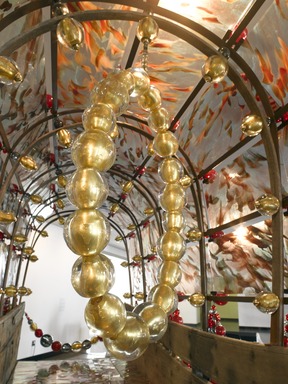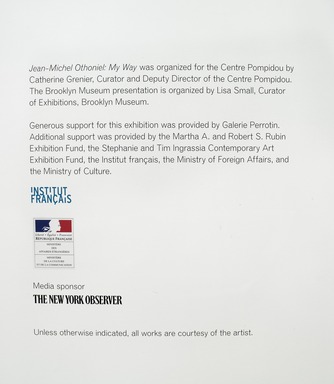

Jean-Michel Othoniel: My Way, August 17, 2012 through December 02, 2012 (Image: DIG_E_2012_Jean-Michel_Othoniel_01_PS4.jpg Brooklyn Museum photograph, 2012)
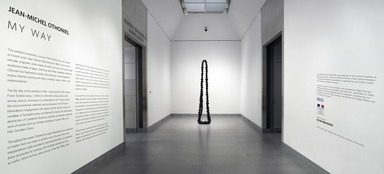
Jean-Michel Othoniel: My Way, August 17, 2012 through December 02, 2012 (Image: DIG_E_2012_Jean-Michel_Othoniel_02_PS4.jpg Brooklyn Museum photograph, 2012)
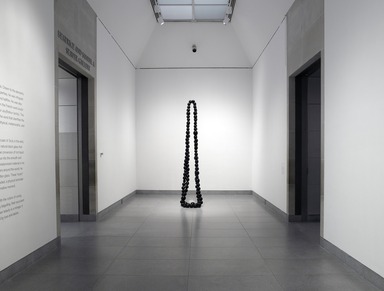
Jean-Michel Othoniel: My Way, August 17, 2012 through December 02, 2012 (Image: DIG_E_2012_Jean-Michel_Othoniel_03_PS4.jpg Brooklyn Museum photograph, 2012)

Jean-Michel Othoniel: My Way, August 17, 2012 through December 02, 2012 (Image: DIG_E_2012_Jean-Michel_Othoniel_04_PS4.jpg Brooklyn Museum photograph, 2012)

Jean-Michel Othoniel: My Way, August 17, 2012 through December 02, 2012 (Image: DIG_E_2012_Jean-Michel_Othoniel_05_PS4.jpg Brooklyn Museum photograph, 2012)

Jean-Michel Othoniel: My Way, August 17, 2012 through December 02, 2012 (Image: DIG_E_2012_Jean-Michel_Othoniel_06_PS4.jpg Brooklyn Museum photograph, 2012)
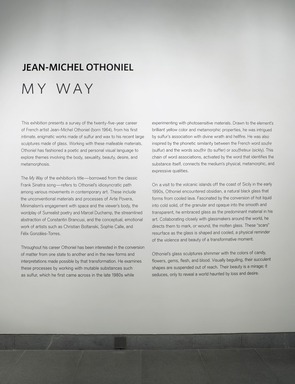
Jean-Michel Othoniel: My Way, August 17, 2012 through December 02, 2012 (Image: DIG_E_2012_Jean-Michel_Othoniel_07_PS4.jpg Brooklyn Museum photograph, 2012)
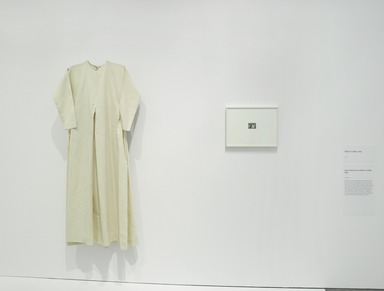
Jean-Michel Othoniel: My Way, August 17, 2012 through December 02, 2012 (Image: DIG_E_2012_Jean-Michel_Othoniel_08_PS4.jpg Brooklyn Museum photograph, 2012)

Jean-Michel Othoniel: My Way, August 17, 2012 through December 02, 2012 (Image: DIG_E_2012_Jean-Michel_Othoniel_09_PS4.jpg Brooklyn Museum photograph, 2012)

Jean-Michel Othoniel: My Way, August 17, 2012 through December 02, 2012 (Image: DIG_E_2012_Jean-Michel_Othoniel_10_PS4.jpg Brooklyn Museum photograph, 2012)

Jean-Michel Othoniel: My Way, August 17, 2012 through December 02, 2012 (Image: DIG_E_2012_Jean-Michel_Othoniel_11_PS4.jpg Brooklyn Museum photograph, 2012)
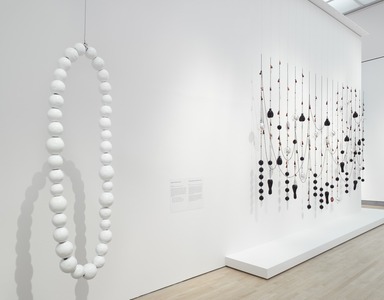
Jean-Michel Othoniel: My Way, August 17, 2012 through December 02, 2012 (Image: DIG_E_2012_Jean-Michel_Othoniel_12_PS4.jpg Brooklyn Museum photograph, 2012)

Jean-Michel Othoniel: My Way, August 17, 2012 through December 02, 2012 (Image: DIG_E_2012_Jean-Michel_Othoniel_13_PS4.jpg Brooklyn Museum photograph, 2012)

Jean-Michel Othoniel: My Way, August 17, 2012 through December 02, 2012 (Image: DIG_E_2012_Jean-Michel_Othoniel_14_PS4.jpg Brooklyn Museum photograph, 2012)

Jean-Michel Othoniel: My Way, August 17, 2012 through December 02, 2012 (Image: DIG_E_2012_Jean-Michel_Othoniel_15_PS4.jpg Brooklyn Museum photograph, 2012)
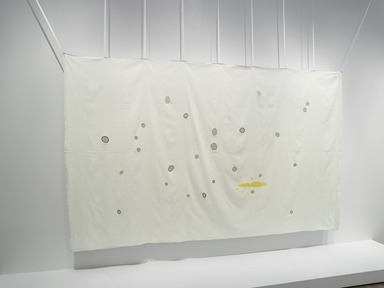
Jean-Michel Othoniel: My Way, August 17, 2012 through December 02, 2012 (Image: DIG_E_2012_Jean-Michel_Othoniel_16_PS4.jpg Brooklyn Museum photograph, 2012)

Jean-Michel Othoniel: My Way, August 17, 2012 through December 02, 2012 (Image: DIG_E_2012_Jean-Michel_Othoniel_17_PS4.jpg Brooklyn Museum photograph, 2012)
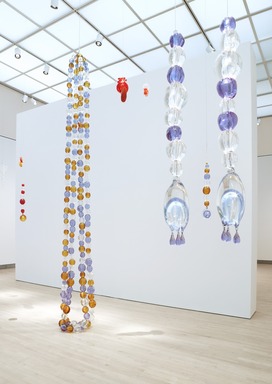
Jean-Michel Othoniel: My Way, August 17, 2012 through December 02, 2012 (Image: DIG_E_2012_Jean-Michel_Othoniel_18_PS4.jpg Brooklyn Museum photograph, 2012)
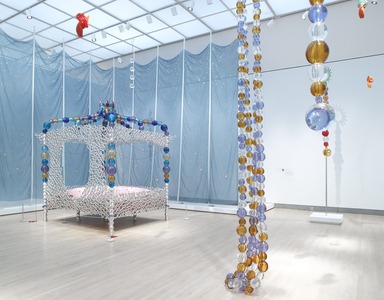
Jean-Michel Othoniel: My Way, August 17, 2012 through December 02, 2012 (Image: DIG_E_2012_Jean-Michel_Othoniel_19_PS4.jpg Brooklyn Museum photograph, 2012)
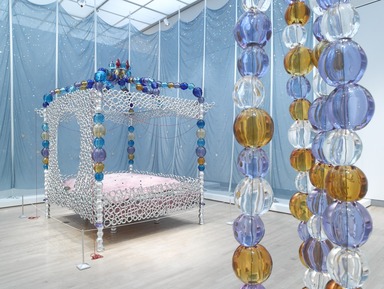
Jean-Michel Othoniel: My Way, August 17, 2012 through December 02, 2012 (Image: DIG_E_2012_Jean-Michel_Othoniel_20_PS4.jpg Brooklyn Museum photograph, 2012)
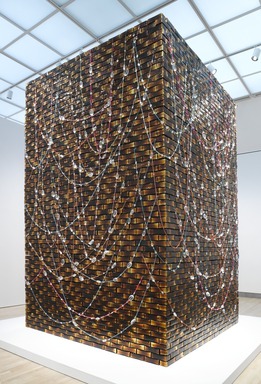
Jean-Michel Othoniel: My Way, August 17, 2012 through December 02, 2012 (Image: DIG_E_2012_Jean-Michel_Othoniel_21_PS4.jpg Brooklyn Museum photograph, 2012)
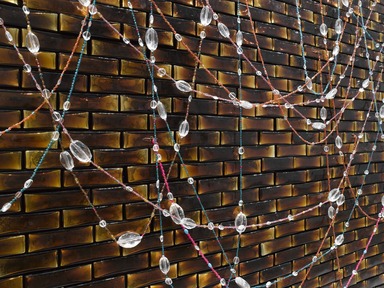
Jean-Michel Othoniel: My Way, August 17, 2012 through December 02, 2012 (Image: DIG_E_2012_Jean-Michel_Othoniel_22_PS4.jpg Brooklyn Museum photograph, 2012)

Jean-Michel Othoniel: My Way, August 17, 2012 through December 02, 2012 (Image: DIG_E_2012_Jean-Michel_Othoniel_23_PS4.jpg Brooklyn Museum photograph, 2012)

Jean-Michel Othoniel: My Way, August 17, 2012 through December 02, 2012 (Image: DIG_E_2012_Jean-Michel_Othoniel_24_PS4.jpg Brooklyn Museum photograph, 2012)
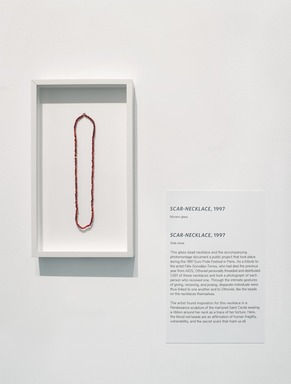
Jean-Michel Othoniel: My Way, August 17, 2012 through December 02, 2012 (Image: DIG_E_2012_Jean-Michel_Othoniel_25_PS4.jpg Brooklyn Museum photograph, 2012)

Jean-Michel Othoniel: My Way, August 17, 2012 through December 02, 2012 (Image: DIG_E_2012_Jean-Michel_Othoniel_26_PS4.jpg Brooklyn Museum photograph, 2012)
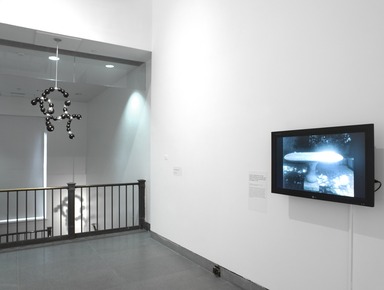
Jean-Michel Othoniel: My Way, August 17, 2012 through December 02, 2012 (Image: DIG_E_2012_Jean-Michel_Othoniel_27_PS4.jpg Brooklyn Museum photograph, 2012)

Jean-Michel Othoniel: My Way, August 17, 2012 through December 02, 2012 (Image: DIG_E_2012_Jean-Michel_Othoniel_28_PS4.jpg Brooklyn Museum photograph, 2012)
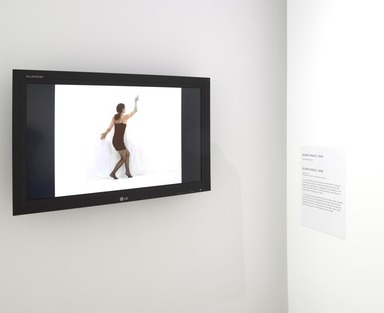
Jean-Michel Othoniel: My Way, August 17, 2012 through December 02, 2012 (Image: DIG_E_2012_Jean-Michel_Othoniel_29_PS4.jpg Brooklyn Museum photograph, 2012)
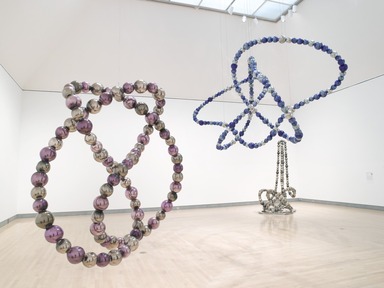
Jean-Michel Othoniel: My Way, August 17, 2012 through December 02, 2012 (Image: DIG_E_2012_Jean-Michel_Othoniel_30_PS4.jpg Brooklyn Museum photograph, 2012)

Jean-Michel Othoniel: My Way, August 17, 2012 through December 02, 2012 (Image: DIG_E_2012_Jean-Michel_Othoniel_31_PS4.jpg Brooklyn Museum photograph, 2012)

Jean-Michel Othoniel: My Way, August 17, 2012 through December 02, 2012 (Image: DIG_E_2012_Jean-Michel_Othoniel_32_PS4.jpg Brooklyn Museum photograph, 2012)
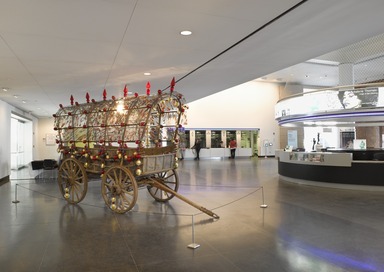
Jean-Michel Othoniel: My Way, August 17, 2012 through December 02, 2012 (Image: DIG_E_2012_Jean-Michel_Othoniel_33_PS4.jpg Brooklyn Museum photograph, 2012)
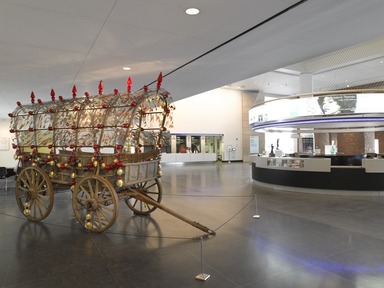
Jean-Michel Othoniel: My Way, August 17, 2012 through December 02, 2012 (Image: DIG_E_2012_Jean-Michel_Othoniel_34_PS4.jpg Brooklyn Museum photograph, 2012)
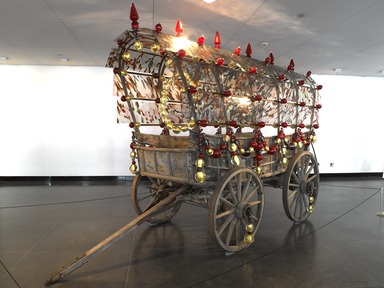
Jean-Michel Othoniel: My Way, August 17, 2012 through December 02, 2012 (Image: DIG_E_2012_Jean-Michel_Othoniel_35_PS4.jpg Brooklyn Museum photograph, 2012)
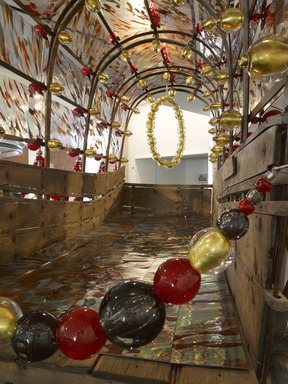
Jean-Michel Othoniel: My Way, August 17, 2012 through December 02, 2012 (Image: DIG_E_2012_Jean-Michel_Othoniel_36_PS4.jpg Brooklyn Museum photograph, 2012)
Jean-Michel Othoniel: My Way
-
JEAN-MICHEL OTHONIEL
MY WAY
This exhibition presents a survey of the twenty-five-year career of French artist Jean-Michel Othoniel (born 1964), from his first intimate, enigmatic works made of sulfur and wax to his recent large sculptures made of glass. Working with these malleable materials, Othoniel has fashioned a poetic and personal visual language to explore themes involving the body, sexuality, beauty, desire, and metamorphosis.
The My Way of the exhibition’s title—borrowed from the classic Frank Sinatra song—refers to Othoniel’s idiosyncratic path among various movements in contemporary art. These include the unconventional materials and processes of Arte Povera, Minimalism’s engagement with space and the viewer’s body, the wordplay of Surrealist poetry and Marcel Duchamp, the streamlined abstraction of Constantin Brancusi, and the conceptual, emotional work of artists such as Christian Boltanski, Sophie Calle, and Félix Gonzáles-Torres.
Throughout his career Othoniel has been interested in the conversion of matter from one state to another and in the new forms and interpretations made possible by that transformation. He examines these processes by working with mutable substances such as sulfur, which he first came across in the late 1980s while experimenting with photosensitive materials. Drawn to the element’s brilliant yellow color and metamorphic properties, he was intrigued by sulfur’s association with divine wrath and hellfire. He was also inspired by the phonetic similarity between the French word soufre (sulfur) and the words souffrir (to suffer) or souffreteux (sickly). This chain of word associations, activated by the word that identifies the substance itself, connects the medium’s physical, metamorphic, and expressive qualities.
On a visit to the volcanic islands off the coast of Sicily in the early 1990s, Othoniel encountered obsidian, a natural black glass that forms from cooled lava. Fascinated by the conversion of hot liquid into cold solid, of the granular and opaque into the smooth and transparent, he embraced glass as the predominant material in his art. Collaborating closely with glassmakers around the world, he directs them to mark, or wound, the molten glass. These “scars” resurface as the glass is shaped and cooled, a physical reminder of the violence and beauty of a transformative moment.
Othoniel’s glass sculptures shimmer with the colors of candy, flowers, gems, flesh, and blood. Visually beguiling, their succulent shapes are suspended out of reach. Their beauty is a mirage; it seduces, only to reveal a world haunted by loss and desire. -
NECKLACES
"A necklace is like the shadow of a missing person."
—Jean-Michel Othoniel
Othoniel is drawn to the simple form of the beaded necklace by the many physical, emotional, and symbolic ways it is intimately associated with the body. Necklaces can confer power, provide protection, and enhance beauty; strands of beads can be manipulated for religious or sexual purposes; slave traders exchanged beads for human cargo; and the bead shape can be used to visualize DNA and other molecular structures. When the form is enlarged, these rich corporeal connections are amplified so that the necklace might be interpreted as a surrogate for the body itself. -
WOUNDED GLASS
"I was not fascinated by glass as a material; I was fascinated by the transformation of this material, its metamorphosis.”
—Jean-Michel Othoniel
Othoniel’s obsession with the infinite possibilities of glass began in 1989 when he traveled to the Aeolian Islands off the coast of Sicily. Although he went there to watch sulfur emerging from the mouth of a volcano, he also encountered another raw material: the vitrified lava called obsidian. Fascinated, he sought to artificially re-create this volcanic glass in partnership with the International Glass Research Center (CIRVA) and Saint-Gobain Glass Research in France. By mimicking the metamorphic process with extremely high temperatures and precise calibration, they ultimately produced three small obsidian sculptures, including the one displayed in this exhibition. Those works mark the beginning of Othoniel’s engagement with the world of glass.
By the mid-1990s Othoniel had been accepted into the world of master Murano glass artisans in Venice. He still collaborates closely with them, as well as with other glass blowers around the world, providing drawings and clay models, and directing their movements as they manipulate the molten glass. It is not the glass itself that intrigues him but rather the conceptual possibilities offered by its deceptive and seductive beauty and the inherent poetry of the metamorphosis that brings it into being. He is particularly fascinated by the idea of healing wounds through transformation, a concept he sees exemplified by the working of glass.
“I wanted to work on the wound,” he explains, “to wound the glass: blown glass bears traces of the glassmaker’s body, it is mixed, pulverized, and handled by him. If the ball of glass is wounded while in fusion, this wound will forever resurface. I thus chose to work with such accidents, asking the glassmakers to wound the glass before working on it, leading to irregular, marked forms, bearing scars. And I saw true beauty in these scars. So I drew up a ground rule for my work on glass: to lay bare the violence at work in the material.”
-
April 1, 2012
Jean-Michel Othoniel: My Way, a mid-career retrospective of the work of Jean-Michel Othoniel, one of France’s most prominent contemporary artists, features sixty-seven pieces that trace the artist’s career over the past twenty-five years.
My Way presents Othoniel’s early works from the 1980s, rendered in sulfur, phosphorus, and wax, that touch upon sexual identity and suffering, and his more recent large-scale works made with colorful Murano glass from Italy, a medium that combines strength and fragility. His organic and geometrical glass sculptures conjure historical and popular references while also evoking the fantasy universe of the fairytale. Included will be the Museum’s own Othoniel, The Secret Happy End (2008), as well as four pieces loaned by New York City collectors. The title of the exhibition is taken from the song made famous by Frank Sinatra, My Way, which is symbolic of a unique vision unaffected by popular trends.
Works on view include Self-Portrait in Priest’s Robe (1986), an early meditation on mourning and desire made after the death of a former lover; The Soul Molded in the Bottom (1989), rendered in sulfur, a substance Othoniel considers beautiful yet vulgar and is drawn to for its metamorphic qualities; Black is Beautiful (2003), a monumental work comprised of a double-stranded necklace of black-colored Murano glass beads, the title of which references the cultural movement launched by African Americans in the 1960s; Lacan’s Knot (2009), a piece made with futuristic mirrored glass and steel that evokes the three Borromean rings that provided Jacque Lacan inspiration for his theory of human subjectivity; and Drawings Series (Aquarelle) (1996-2000), a group of detailed watercolor sketches for large-scale projects and commissions realized later, including the Kiosk of Nightwalkers (2000), a Metro entrance that has become one of the most beloved landmarks of Paris.
In the early 1990s, while visiting the Aeolian Islands, Othoniel became interested in obsidian, a naturally occurring volcanic glass that he was able to create artificially for works like Spoonerism (1992). Fascinated by its malleability and transitional properties, he made glass the predominant element in his work and began collaborating with glassmakers in Murano, Italy, and elsewhere around the world. The exhibition will feature his larger-scale glass works including My Bed (2002); glass bead heraldic banners; glass forms that hang like strange fruit or creatures; necklaces magnified to architectural scale; and the artist’s most recent glass sculptures, which are suspended or rise from the ground and feature rows of beads that trace curves and knots suggesting mathematical equations or molecular structures.
Also in the Brooklyn Museum presentation is The Precious Stonewall, a major work produced in India (New Delhi, Firozabad) at the invitation of the French Embassy in collaboration with Institut Français (Paris) and the Alliance Française de Delhi and with the support of the Centre Pompidou. This work is a tribute to the piles of bricks that line Indian roads adorned with hundreds of necklaces, each of whose stones have been hand cut like a jewel. Made of hundreds of amber glass bricks, this monumental work is also the artist’s poetic homage to the iconic Stonewall Inn in New York City where the gay rights movement was born.
A Paris-based artist, Jean-Michel Othoniel was born in 1964 in Saint-Etienne, France. Beginning in the 1980s he made art with such mutable materials as sulfur, lead, and beeswax. In 1993, he began using glass, receiving widespread recognition for his sparkling, jewelry-like artworks made with glass globes crafted on the Venetian island of Murano and in other glass centers around the world. He has had solo exhibitions at such venues as the Fondation Cartier pour l’art contemporain (2003) and Centre Pompidou (2011) and has participated in international exhibitions including Too French at the Hara Museum ARC in Japan (1991), Documenta IX in Germany (1992), the Kwangju Biennale in South Korea (2000), and the Tenth Istanbul Biennial (2007). An upcoming solo exhibition presented by L&M Arts, New York, from September 6 through October 6, 2012, will include a number of new artworks. Othoniel has also been chosen to create a permanent landscape installation at the Water Theatre Grove in the Gardens of the Palace of Versailles in 2013.
The exhibition is organized by the Centre Pompidou. The Brooklyn Museum presentation is organized by Lisa Small, Curator of Exhibitions, Brooklyn Museum.
Generous support for this exhibition was provided by Galerie Perrotin. Additional support was provided by the the Martha A. and Robert S. Rubin Exhibition Fund, the Stephanie and Tim Ingrassia Contemporary Art Exhibition Fund, the Institut français, and the French Ministry of Foreign Affairs and the Ministry of Culture.
The New York Observer is media sponsor.
Tour:
Centre Pompidou, Paris (March 2–May 23, 2011)
Leeum Samsung Museum of Art, Seoul (September 8–November 27, 2011)
Hara Museum of Contemporary Art, Tokyo (January 7– March 11, 2012)
Macau Museum of Art (April 4–June 17, 2012)
Brooklyn Museum (August 17–December 2, 2012)
Press Area of Website
View Original
